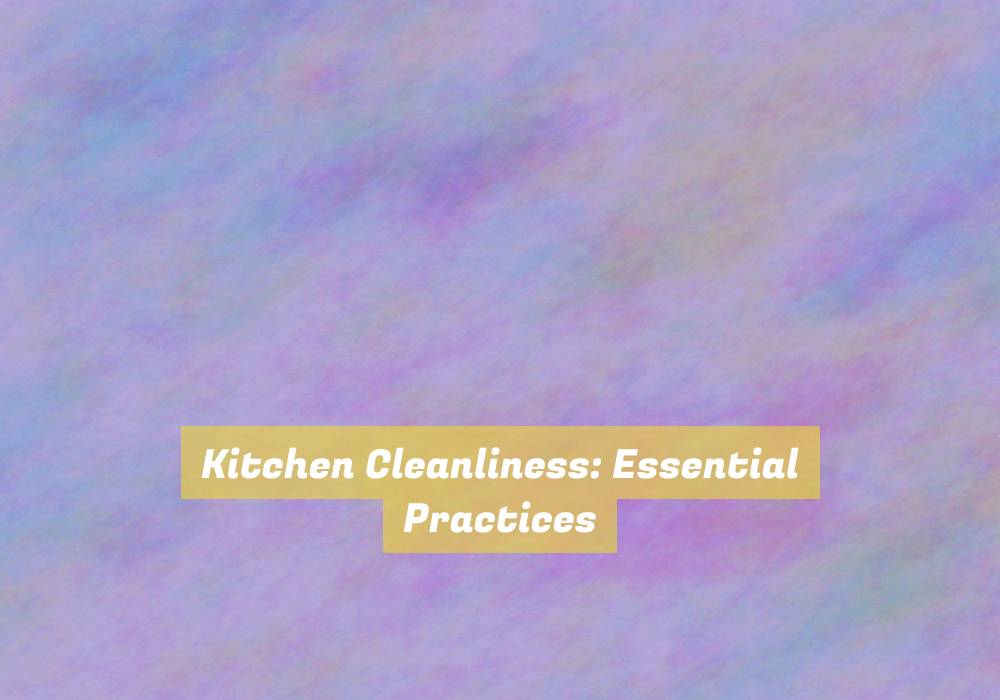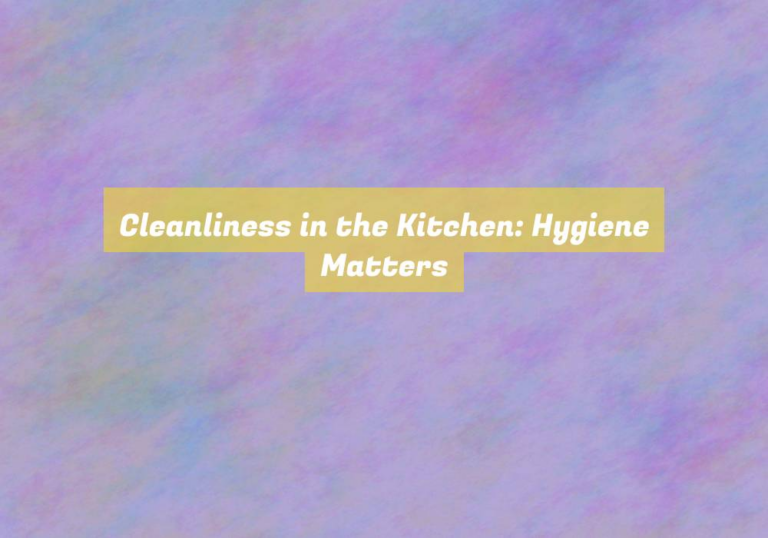Kitchen Cleanliness: Essential Practices
Are you confident that your kitchen is truly clean? The appearance of cleanliness can sometimes be deceiving, and itG??s essential to ensure that your kitchen is not only visually spotless but also free from harmful bacteria and other contaminants.
In this discussion, we will explore the essential practices that will help you maintain a kitchen environment that is both hygienic and safe for food preparation. From effective cleaning routines to proper food storage, each aspect contributes to the overall cleanliness of your kitchen.
Understanding and implementing these practices is crucial for the well-being of everyone who enjoys meals prepared in your kitchen.
Proper Food Storage
To maintain proper food storage, keep perishable items refrigerated at the appropriate temperature to prevent spoilage. Your refrigerator should be set at 40-?F (4-?C) or below to slow down the growth of bacteria and other pathogens that can cause foodborne illness.
Make sure to store raw meat, poultry, and seafood in sealed containers or plastic bags on the bottom shelf of the refrigerator to prevent juices from dripping onto other foods.
Leftovers should be stored in shallow, airtight containers to promote rapid and even cooling. ItG??s crucial to label and date leftovers to ensure theyG??re consumed within a safe timeframe.
Additionally, be mindful of the G??danger zoneG?? temperature range between 40-?F (4-?C) and 140-?F (60-?C) where bacteria multiply rapidly. Perishable items left in this temperature range for more than two hours should be discarded to avoid the risk of foodborne illness.
Effective Cleaning Routines
Maintaining proper food storage is essential, and effective cleaning routines play a crucial role in preventing cross-contamination and foodborne illnesses in your kitchen. Start by designating specific cleaning days for different kitchen areas to ensure a comprehensive approach.
Begin by clearing and sanitizing countertops, cutting boards, and utensils after each use to avoid the transfer of bacteria between raw and cooked foods. Regularly clean and disinfect kitchen surfaces, including handles, knobs, and switches, as theyG??re often touched with contaminated hands. Pay special attention to appliances and equipment that come into contact with food, such as blenders, mixers, and can openers. DonG??t forget to replace sponges and dishcloths frequently to prevent the buildup of harmful bacteria.
Moreover, create a routine for cleaning out your refrigerator and pantry to discard expired items and wipe down shelves and drawers with a food-safe disinfectant. In addition, ensure that your sink, both the basin and the drain, are thoroughly cleaned to prevent the growth of harmful pathogens.
Hygienic Food Handling
How can you ensure that youG??re handling food in a hygienic manner to prevent the risk of contamination and foodborne diseases?
First and foremost, always wash your hands thoroughly with soap and warm water before and after handling any food, especially raw meat, poultry, and seafood.
ItG??s crucial to keep your kitchen surfaces, utensils, and cutting boards clean by washing them with hot, soapy water after each use.
When preparing different types of food, such as raw vegetables and cooked meat, use separate cutting boards to avoid cross-contamination.
Additionally, make sure to cook foods to the appropriate internal temperatures, using a food thermometer to check for doneness.
When storing food, keep raw meat, poultry, and seafood separate from other foods in the refrigerator to prevent any potential leakage.
Finally, be mindful of expiration dates and proper food storage to avoid consuming spoiled or contaminated products.
Maintenance of Kitchen Appliances
Regular maintenance of your kitchen appliances is essential for ensuring their efficient performance and longevity. Start by cleaning the exterior and interior of your appliances regularly. Wipe down the surfaces of your refrigerator, oven, and microwave with a mild detergent to remove any food spills and grease buildup. For the interior, remove shelves and drawers to wash them with warm, soapy water.
Additionally, check the seals on your refrigerator and oven doors for any signs of wear and tear, and replace them if necessary to maintain energy efficiency.
Next, pay attention to your stove and dishwasher. Clean the stovetop and burners to prevent food residue from accumulating and causing potential fire hazards. For the dishwasher, regularly remove and clean the filter to prevent clogs and ensure proper drainage.
Furthermore, remember to schedule professional maintenance for your appliances, such as refrigerator coils cleaning and oven calibration, to keep them running efficiently.
Conclusion
In conclusion, keeping your kitchen clean is essential for the health and safety of you and your family.
By following proper food storage, effective cleaning routines, hygienic food handling, and maintaining kitchen appliances, you can prevent the spread of bacteria and foodborne illnesses.
Make it a habit to prioritize cleanliness in your kitchen to create a safe and healthy environment for cooking and eating.







I appreciate your focus on the importance of a truly clean kitchen, not just one that looks tidy. It’s so easy to overlook those hidden spots where bacteria can thrive, like the inside of the refrigerator or the cutting boards we use.